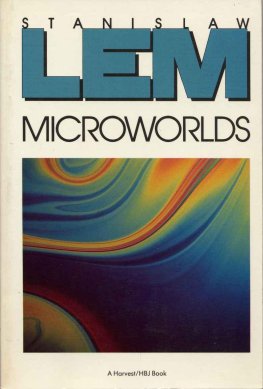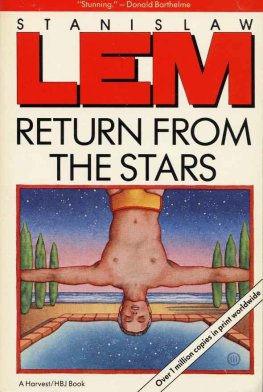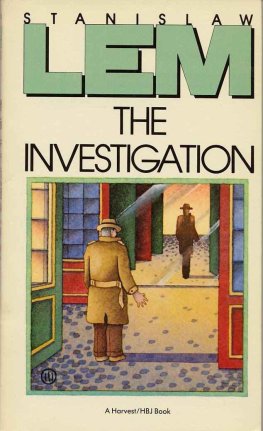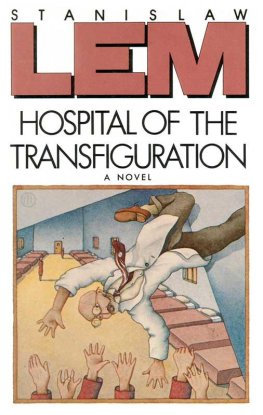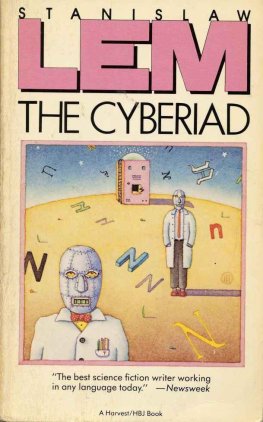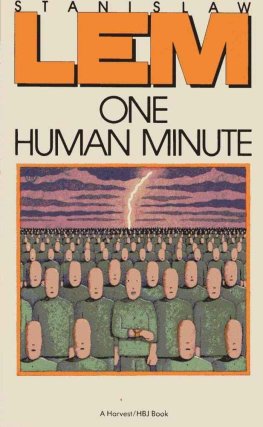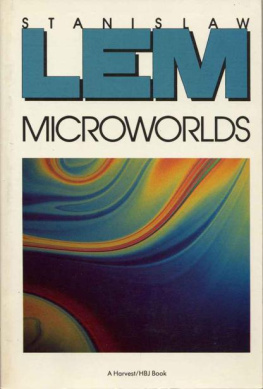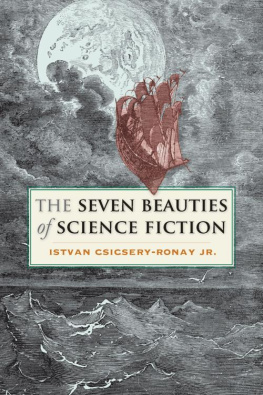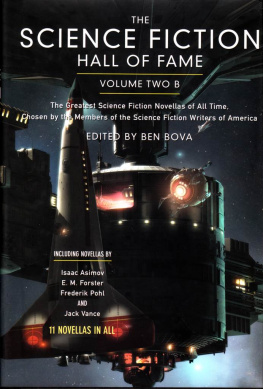Stanislaw Lem
MICROWORLDS
Writings on Science Fiction and Fantasy
Edited by Franz Rottensteiner
It was toward the end of the 1960s that I began corresponding with Stanislaw Lem. I had been a voracious reader of science fiction for many years, although I disliked most of what I read and saw it as a waste of the forms potential. Perhaps it was this similarity in our views that Lem found attractive.
Science fiction differs from other popular genres in that its readers are frequently articulate, eager to meet and talk with other science-fiction fans. There is a whole science-fiction subculture, with hundreds of amateur magazines, or fanzines, devoted to science fiction, its authors, and its audience. These magazines, most with a circulation of only a few hundred copies, are found not only in the United States, where they started, but all over the world, even in Communist countries. Since the early 1960s I myself have edited such a fanzine, called Quarber Merkur; it is devoted to the analysis of science fiction and fantasy writing and is rather critical of them. At that time I knew of Lem, but I considered him only one science-fiction writer among many, though perhaps the most important in Eastern Europe; I had read very little of his work. In Germany he was little more than a name; few of his books had appeared in German, mainly in East Germany. His first science-fiction novel, Astronauci (1951; The Astronauts), had been widely translated, and a few other works had appeared in France and Italy, mostly in atrocious translations. That was all.
In 1968 I published a review of an East German translation of Lems novel The Invincible in my magazine and sent the author a copy, without comment. In response, Lem wrote me a long and extremely interesting letter in German. That was the beginning of a long correspondence; by now Lems letters to me fill three large files. They constitute the most detailed documentation in the West of Lems thoughts, activities, and international career since 1968. From his letters I recognized a truly remarkable mind, and when I became a science-fiction editor in West Germany in 1970 I was able to publish him. Then it occurred to me that I might do more for Lem if I became his literary agent.
Early in our correspondence, Lem indicated that he was planning to write a study of science fiction but was having difficulty obtaining source materials. I sent him what I considered interesting and drew his attention to a number of writers, among them Cordwainer Smith, Philip K. Dick, J. G. Ballard, C. M. Kornbluth, and Philip Jos Farmer. Aside from supplying some works of science fiction and also some of the few then existing books about science fiction (especially the criticism of Damon Knight and James Blish), I made no attempt to influence the shape of Lems book, nor would any such endeavor have been successful with a writer like Lem. (Curiously, some science-fiction writers later implied I had unduly influenced Lem or even made him up.)
The result of Lems efforts was finally published in 1971 as Fantastyka i futurologia (Science Fiction and Futurology). It is both a rigorous investigation of the theoretical basis of science fiction and a detailed analysis of many of its major topics and literary themes. The first volume in particular contains some highly theoretical reasoning that is without precedent in other books on science fiction, most of which are historical, biographical, or bibliographical in character. So far Lems book has appeared outside Poland only in German and (in abridged form) in Hungarian. Two chapters have been published in English in the journal Science-Fiction Studies, The Time-Travel Story and Related Matters of Science-Fiction Structuring and Metafantasia: The Possibilities of Science Fiction. Both give an indication of the freshness and originality of Lems approach and also shed light on his own science fiction.
While Lem was writing Fantastyka i futurologia, we corresponded a great deal, and in his letters Lem provided extensive explanations of what he was doing. Later I published some of these letters as separate articles. On the Structural Analysis of Science Fiction had its genesis in a lengthy letter; it is the most succinct statement of the aims of Lems book. Lem also wrote many reviews and essays for my magazine, and I translated many of Lems writings for Australian publications like John Foysters Journal of Omphalistic Epistemology and especially Bruce Gillespies Science Fiction Commentary. These writings proved quite controversial for science-fiction buffs, especially the long essay Science Fiction: A Hopeless Case with Exceptions, a more polemical version of a chapter from Fantastyka i futurologia.
Lem has an insatiable thirst for knowledge and more of a philosophical than a poetic bent; scientific and philosophical inquiry has always played an important part in his work. Even in his fiction there is a strong essayistic element. Learned disquisitions are frequently woven into the plot, and if anything this practice has grown stronger with the passage of time. The stories in the various cycles (such as the Ijon Tichy tales, the Pirx stories, and the philosophical tales of the Cyberiad) become more complex with time; sometimes they carry so heavy an intellectual load that the story is in danger of being smothered. Moreover, Lem leans increasingly toward forms that are hybrids of fiction and nonfiction. His Masters Voice, a novel of science, is actually a brilliant essay on the limits of human knowledge, the process of cognition, and the moral responsibility of the scientist. It was followed by fictions that do away altogether with conventional characters and narrative. A Perfect Vacuum is a collection of reviews of nonexistent books; Imaginary Magnitude brings together introductions to equally nonexistent works.
So it is hardly surprising that Lem should have made a critical study of the problem that interests him most, that of the scientific and literary foundations of his own and others writings. Given the vagaries of translation, however, very little of Lems criticism is available in English, and most of what is available deals with science fiction, the genre which Lem himself favors most of the time. Of course, the practice of science fiction is an important subject of Lems nonfiction writing, but it is only one of many. Lems interests range from cybernetics and artificial intelligence to cosmology and cosmogony, genetic engineering, the creation of simulated environments, literary theory and the reception of literary works, and indeed everything pertaining to the future of man and his civilization.
In Dialogi (1957; Dialogues) Lem discussed, in the form of Socratic dialogues between a Berkeleyan Hylas and Filonous, the amazing prospects of the young science of cybernetics. His Summa Technologiae (1964), perhaps his most important discursive work, is a futurological treatise unlike anything else on the subject. Instead of presenting the usual catalogue of wonderful or horrible things that the future has in store, Lem selects certain ideas to pursue to their outermost limits the problem of cosmic civilizations, the evolution of artificial intelligence, the genetic remodeling of man, the creation of worlds, stellar engineering; or he formulates daring hypotheses about the breeding of information or the total reconstruction of reality.
In Filozofia przypadku (1968; The Philosophy of Chance), Lem turned to quite another question: why are works of literature received differently in different ages and different cultures, being highly esteemed at certain times and held in low regard at others? Here Lem tried to arrive at an empirical theory of literature that would take into account such temporal and cultural factors. The book also contains a spirited polemic against structuralism, a polemic that is continued in

